
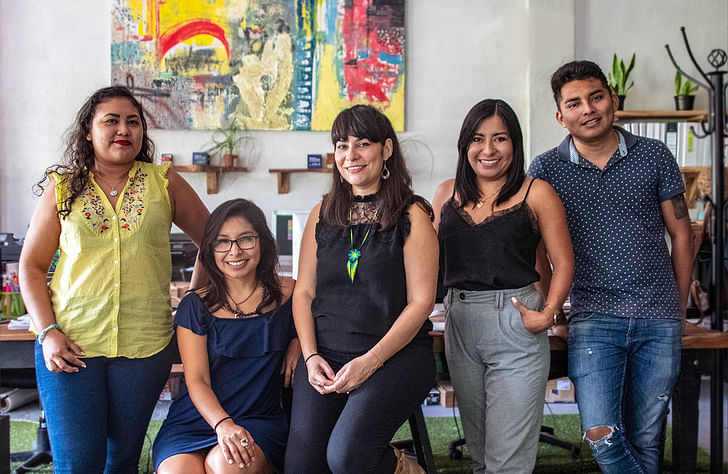
Heading up the Tulum-based CO-TA Architecture is Paulina Villa who was born in La Paz, Baja California Sur, but grew up in Monterrey. Not intending to open a practice in Tulum, she found herself lured in by exciting opportunities and convinced to stay by the ease and simplicity of the transition to the Caribbean coast. The office, which involves a small team of full time staff and a network of regular freelancers and contractors in the local area are currently working on a number of hotels spread along the coast, as well as residential and commercial projects inland.
Based in the town of Tulum they share their office with a clothing atelier and a digital arts studio specializing in animation, mixed media and virtual reality. I met up with the team to find more about how the local environment informs their work and what the next steps for CO-TA Arquitectura are.
Location?
Tulum, Mexico.
When did the practice start?
The practice started as soon as I arrived in the area and slowly evolved through meeting people, understanding the climate, materials and context, polishing other aspects that professionally would influence me to become independent. I started off working in 2009 in Tulum for three developers on a Project they had released for pre-sale; even though my plans were to stay for three years and save money for traveling, inevitably Tulum “pulled” me and the years have naturally rolled by. Little free-lance jobs led to the possibility of becoming independent in 2010.
What made you want to start your own practice and why in Tulum?
I think it was a natural flow that presented itself. The right opportunity came to me with Hartwood Restaurant; I met the owner looking for a place to rent, and even though I wasn't working on rentals, I helped him out connecting with other clients. The more we talked about why he was in Tulum, his projections and what he needed, the more it made sense for the later assignment that involved design and construction on the beach- jungle side. It seemed a little 'crazy' at the time, thinking to myself... "What am I doing in the middle of the tropical jungle trying to build this?". Some of the workers didn’t even speak Spanish! Some of the contractors were truly locals that didn’t have a company yet and gathered with their families to get the jobs done, and there were only about three commercial businesses on the Tulum beach strip back in those 2010 days; Posada Margherita, Tabano and Casa Banana. But what seemed like a crazy side- project from my office job, turned out to be a strong transition from my initial point in Tulum to where I would head next. I didn't intend to open my own practice, but upon arriving to Tulum, it really just flowed.
It seemed a little 'crazy' at the time, thinking to myself... "What am I doing in the middle of the tropical jungle trying to build this?"
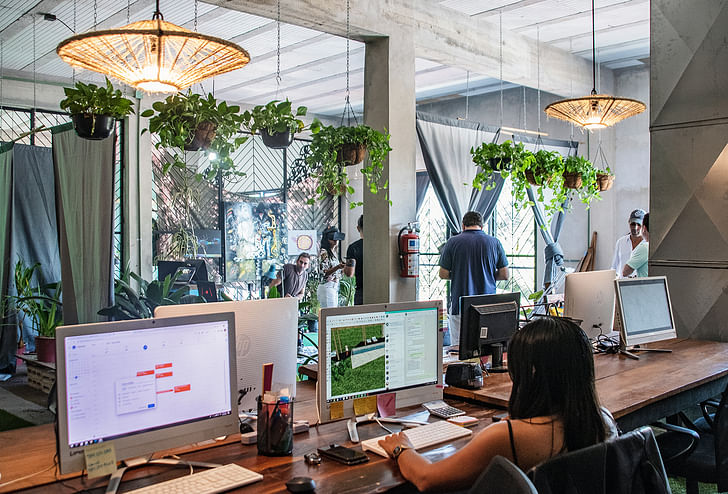
How many staff?
I have had so many different stages of the team’s evolution and development that I can’t quite say an accurate number. Throughout time and projects, the team members become kind of like an “entity” that brings itself to life when we are all together, with its own personality or character. Of course what officially started as one in the team, multiplied into three and so on and so forth. At first all that was needed was help to diversify your own hands into producing with others; but after 2010’s Hartwood and this “project after project” pattern, by 2013 we were a team of around eight members and the “help” became a little more than that, considering positions that required experience and preparation between drafters, project designers, new graduates, construction supervisors, and administratives.
During these years I’ve had teams that have become of up to 18 members, considering an average of 30 projects simultaneously working on residential, commercial and hotels, as well as an average of 3 constructions per year. And of course, always subcontracts or outsourced free lanced works. This phenomena was the ultimate climax of killer work flow from 2016 to 2018 as “CO-TA Arquitectura”, and have guided professionally and evolved the experience in 2019 into a smaller team of six key positions fixed internally in office and a variety of six other collaboratively free lancers whom I’ve worked with before. Many of the people that have been a part of my team are now creating their own practices; and I have professionally matured also into how to collaborate with my team and who this team is. What influences all these behaviours are the projects and clients, since these are the factors that create the particular offer and demands on executing a project.
Throughout time and projects, the team members become kind of like an “entity” that brings itself to life when we are all together, with its own personality or character.
What is your company ethos?
Passion, Commitment, Solution, Teamwork, Service, Honesty, Growth. These characterize our work philosophy, striving to identify the priorities and needs of our projects by interpreting, personalizing and innovating in our creative process.
You are located in an area of spectacular beauty, how does the environment around you inspire your projects? Do you use local materials?
There’s only been about four people that were actually in Tulum out of all the team members that have rotated. This means everybody else has been from everywhere else, mostly Mexicans, but with different cultural insights, customs, views and perspectives, among other aspects. Of course, coming to Tulum to work at an Architecture design and construction office is an exciting experience. Needless to say about the nature with the Caribbean ocean, the jungle, cenotes, lagoons, ruins... also the people. This is a particular multi-cultured community in Mexico that adds the perfect ingredient to the experience of living and working here in a creative branch. The exchange of opinions, customs, language... it all becomes a spectacular conversation and discussion at design process meetings.
The collection of diverse experiences allows several heads contributing rather than just one, enriching the result and empathizing furthermore with the client’s/ user’s needs. It is a definite fact that the climate, vegetation and local materials are recurrent factors that we utilize in our designs, accordingly to the project’s context and location. Going local, is the best way in terms of cost, maintenance, and community contribution.
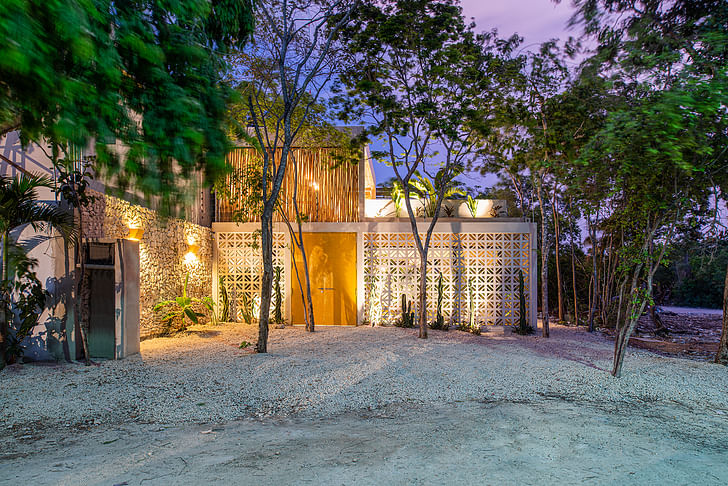
...we believe Architecture is for everyone, the importance relies on the solution of the process; that it has functionality, that it's affordable, that it contributes to its community and or context, and impacts the environment as kindly as possible...
What projects are you currently working on?
We are a little spread out around the Tulum area; we have hotels in design in Playa del Carmen, Bacalar, El Cuyo, Holbox, and Tulum Beach, also in Los Cabos and possibly in La Paz Baja California. We are also finishing two urban projects, both that are private neighbourhoods composed with residential, commercial and boutique hotel areas. We have a few condominiums, and several houses for vacational rentals. But we also have little projects, to which I have never stopped welcoming in our office, even though they take the same dedication and time as the big projects, we believe Architecture is for everyone, the importance relies on the solution of the process; that it has functionality, that it's affordable, that it contributes to its community and or context, and impacts the environment as kindly as possible... this is possibly one of the main reasons why I have made my internal team of a smaller amount of members.
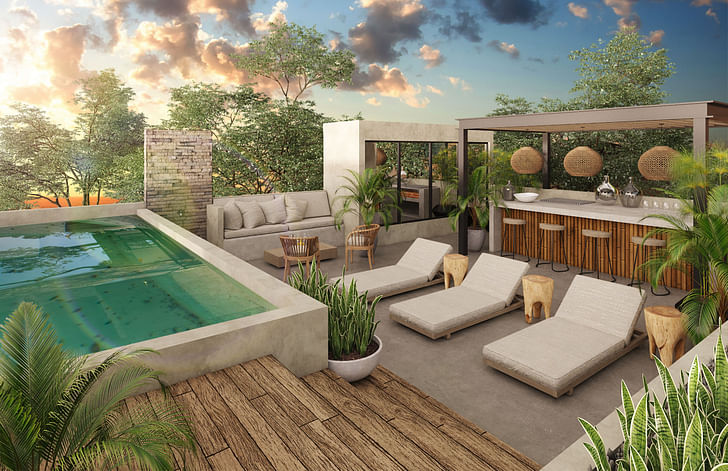
What is your favorite part of your studio?
Our office is a collaborative open space divided into three creative practices; a clothing atelier from Pipa as both “Pipadecolores” and “Andromeda”; a digital arts studio specialized in animation, mixed media and virtual reality from Giulio Serafini as “V-aRt”; and our Architecture workshop as “CO-TA Arquitectura”. I love this space sharing although I usually seem to be in my own little world. Space wise, I don’t think I have a particular favourite part of the studio; as a user, it depends on what I’m doing and the work mood. For instance, if I want to hide and concentrate I sit at the back meetings space, or if I’m more friendly and creative I sit down at the big common table with the rest of the team, or sometimes I sit down at the centre table in the middle of the whole office nosing around what is happening around. Workwise, to me the most gratifying part of what we do, is when delivering to the client; there is a very clear captured moment in our Instagram for “Casa Leonardo” when he walks through the entrance door.

What is your favourite nearby coffee shop/bar/lunch spot?
Italdo, downstairs from our office space, great coffee and great pasticceria italiana.
Do you socialise together as a team?
Yes, and I have proved it is fundamental for the work relationship. This is a factor that has been on and off throughout the years depending on the amount of work and the team members of the period. Right now, Design and Construction “little bosses” as I call them, Claudia Pacheco and Fabiola Serafin, are elemental to the coordination of each project we currently have ongoing in the office and its particularities. Implementing little things such as “happy Friday” or at least celebrating in the office a birthday always help make relations stronger.
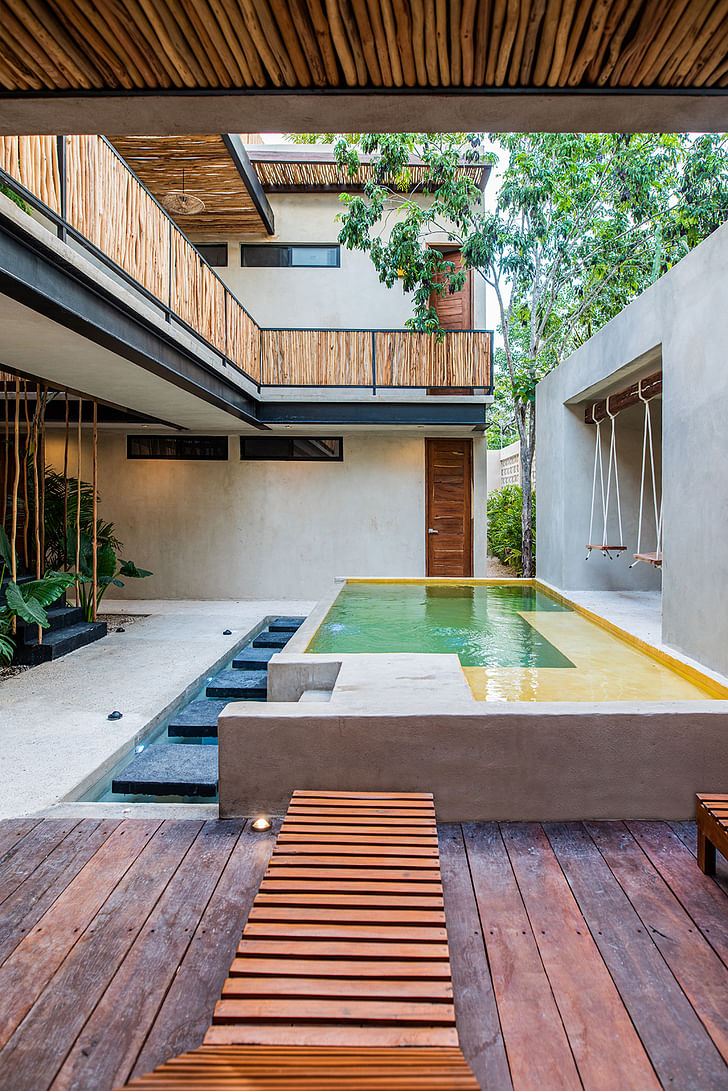
Architect or Architectural style you look up to?
I really like the honesty of the punctual meaning of brutalism; although it is often referred to as apparent concrete, to me is the sincerity of the material being what it is as what it is without pretending to be anything else; furthermore than concrete, also millions of types of stone, brick, wood, etc. But truthfully, I look up to so many architectural styles that what it comes to in my practice is a deep empathy into understanding the client and user needs. This personalization design process is described in our office as “What begins with the intention of creating an apple might end up resulting possibly into a pear... Still a fruit but different in shape, colour and taste”. This design process leads us to “innovate” specific materials or objects created specifically for a project; such is the case of custom made tiles, pigmented polished cement surfaces, fixed furniture, lattices, lamps, among others.
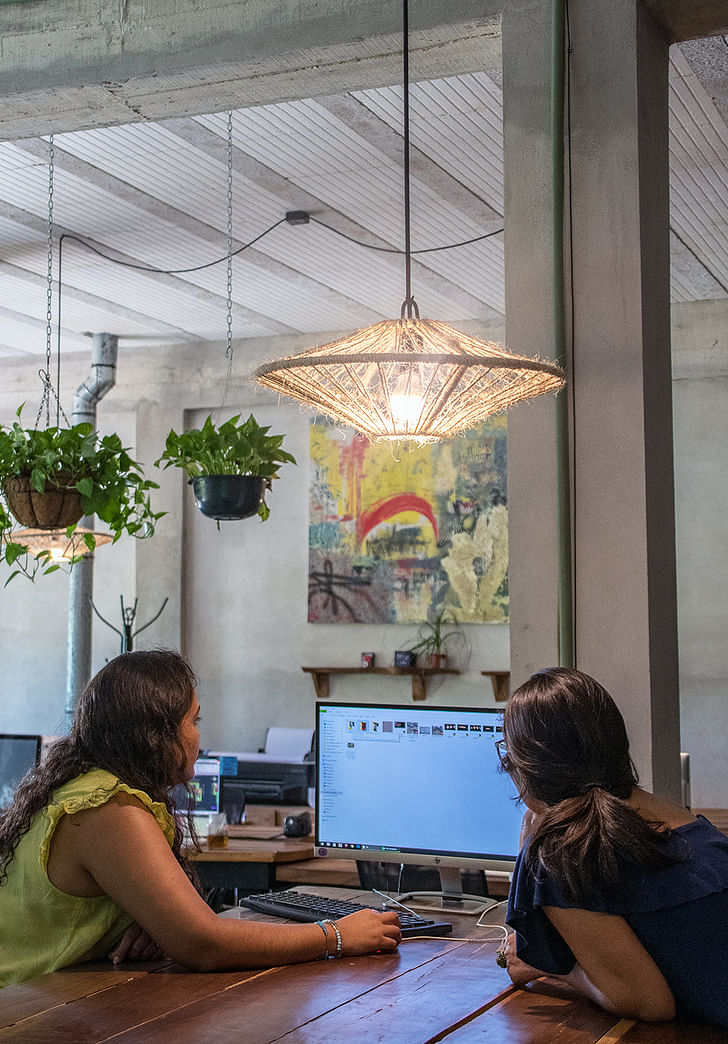
What is your favorite building in Tulum?
For now, I think it could be the little hotel in town called Casa Pueblo Tulum, for an honest contribution honouring the architectural building traditions from Yucatán... kind of like an hacienda, very minimal but warm at the same time.
What is your favorite building that you have designed?
Regardless of the tough question this is, for we are the hardest judges of ourselves, I think my response will be rather than a building, a space we designed in town called “Palma Central” composed of food trucks, children’s play space, bar... more than the design it is about the result of the impact that it caused in the community. Such park-like places exist everywhere around the world; but in Tulum there wasn’t anything yet like this and became beneficial for the society in local and touristic groups, families, friends, couples... interacting in a commercial space adapted within a tropical garden of a beach town. It’s beautiful to observe and very rewarding to have been able to be a part of it in its creation.
This year is your ten year anniversary working in Tulum, how has the practice evolved over that time?
What does the next ten years hold for CO-TA Arquitectura? The practice is now focusing on expanding projects locations, since we have received project offers from other places, even though we are based in Tulum, we are not limiting ourselves only this area. Wherever the wind takes us. We are also implementing technological tools into our design process, mainly through Virtual Reality to have a much better sense of heights, volumes, materials, transition of spaces. So besides our digital model and perspectives, getting digitally into it and walking it makes it quite a particular experience.

Ellen Hancock studied Fine Art and History of Art at The University of Leeds and Sculpture at Mimar Sinan Fine Arts University in Istanbul.Now based in London she has a keen interest in travel, literature, interactive art and social architecture.
No Comments
Block this user
Are you sure you want to block this user and hide all related comments throughout the site?
Archinect
This is your first comment on Archinect. Your comment will be visible once approved.